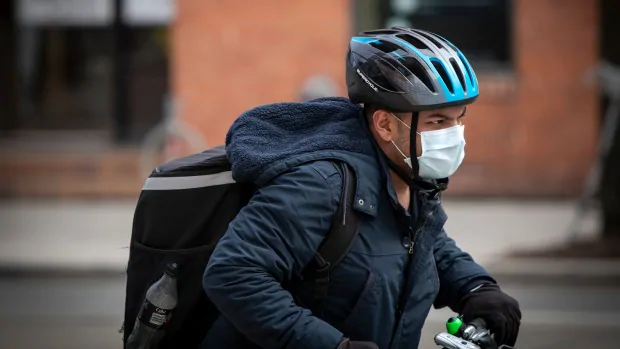How significant is the risk of COVID-19 when handling pickup and delivery items? While the chances of transmission via food courier are quite low, experts say taking a number of precautionary steps can help minimize risk and put the mind at ease.

Perhaps it’s crossed your mind when you picked up a food order, grabbed a beverage at the drive-thru or ordered a pizza: How significant is the risk of COVID-19 when handling pickup and delivery items?
While the chances of transmission via food courier are quite low, experts say taking a number of precautionary steps can help minimize risk and put the mind at ease.
With home delivery for example, proper distancing with the driver is highly recommended.
“You always ask them just to leave it at the door,” said University of Guelph food science professor Keith Warriner. “You’ve got more chance of being infected by a person rather than a parcel.”
Research published in the New England Journal of Medicine last week suggests the virus can live for up to 24 hours on cardboard and on other surfaces, including plastic, for up to 72 hours.
While there’s a small possibility an infected person may have sneezed or coughed while handling your food order, chances that the virus will be passed along on the packaging are slim, said Warriner.
He said frequent hand-washing, particularly before or after handling food and containers, can further mitigate the risk. So handling that pizza box shouldn’t really be cause for heightened concern.
“When you say survive, that’s only one aspect — [the virus has] got to transfer as well,” said Warriner. “It’s fairly low risk, so you wouldn’t need to worry about that.”
At the drive-thru, there could also be a slim chance that an infected person may have coughed or sneezed near your food or beverage order, said Warriner.

Wash hands, re-heat food
Questions around food safety come as restaurants across Canada have shut their doors in recent weeks, either voluntarily or thanks to government regulations amid the COVID-19 pandemic — while many others have shifted to take-out or delivery options to keep business going.
If there’s any concern about safety, steps can be taken when you get home, Warriner said. The food or drink can be heated again and hands should be washed before and after handling.
“I think the risk is probably low,” said Jeff Kwong, associate director of the Centre for Vaccine Preventable Diseases at the University of Toronto. “They’re handling the food for a very short period of time and handing it to you … it’s probably safe.”
Jennifer Ronholm, an assistant professor in faculty of agricultural and environmental sciences at McGill University, said research in this area is just starting to come in.
But like the other experts, she feels it’s not an area of significant concern.
“There is not really much — if any — evidence that people are getting sick this way,” she said. “With this many people, we probably would have seen it if this is a major route of transmission.
“Quantifying exactly what the low risk is of this activity, it’s impossible to put a number to with what we know right now.”








